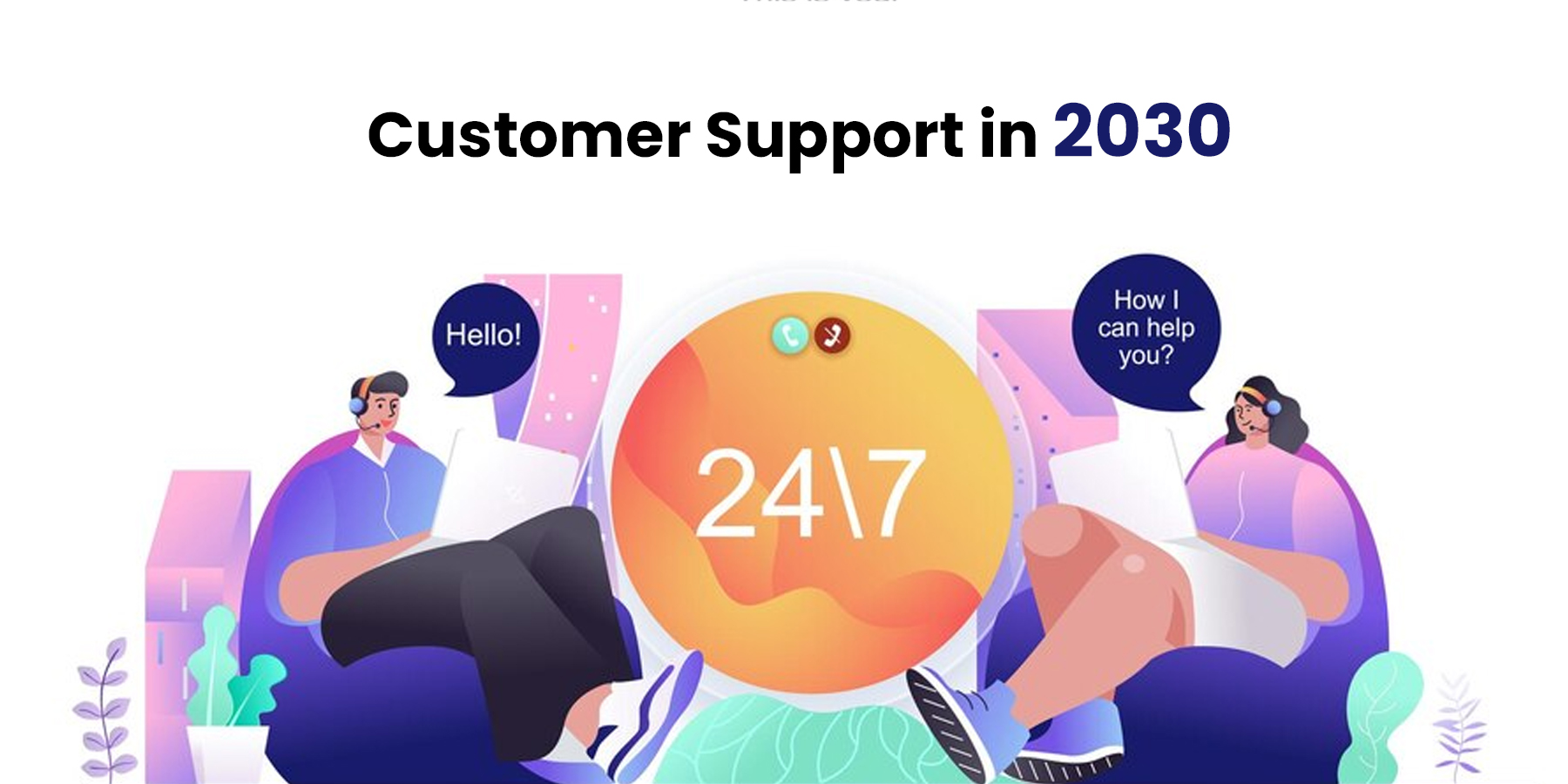There are more than 1,200 customer support outsourcing companies in the U.S. and globally, all promising 24/7 availability, fast ticket resolution, and seamless integration. Yet, for fast-growing businesses seeking a perfect blend of human empathy and tech-driven efficiency, choosing the right support partner can be daunting. Recognizing this challenge, Wow Customer Support, a standout provider in this space, delivers flexible, scalable, and human-powered customer service solutions for companies aiming to grow without inflating internal headcount. Whether it’s chat, voice, or omnichannel support, Wow’s specialized teams help you build lasting customer relationships. But before exploring the right tools or support setup for your business, let’s take a closer look at some key insights about Wow Customer Support.
Wow Customer Support
|
Specifics |
Details |
|
Key Services |
24/7 live chat support, help desk ticket resolution, voice-based customer service, email response handling, technical support, multilingual support, customer retention. |
|
Industries Served |
E-commerce, SaaS, fintech, online education, retail, logistics, real estate, healthcare, travel, and consumer goods. |
|
Tools Supported |
Zendesk, Freshdesk, Intercom, Gorgias, HelpCrunch, LiveAgent, HubSpot Service Hub, Kustomer, and custom CRMs. |
|
Locations Served |
USA, India, Philippines, and more. |
|
Notable Clients |
DTC brands, fast-growing tech startups, online retailers, education platforms, subscription services, and international e-commerce companies. |
|
Contact Details |
USA: 99 Wall Street #625, New York, NY – 10005 India: Vijay Towers, RS Puram, Coimbatore, Tamil Nadu – 641002 Philippines: 19F Marco Polo Ortigas, Sapphire Rd, Ortigas Center, Pasig, 1600 Metro Manila
📞 +1 332 223 8085 ✉️ info@wowcustomersupport.com |
Wow Customer Support has emerged as a trusted partner for brands seeking to deliver exceptional customer service without the overhead of large in-house teams. Since its inception, Wow has helped businesses across industries scale their customer experience operations with trained, empathetic professionals who work as seamless extensions of the client’s internal teams.
Specializing in multichannel and omnichannel support models, Wow blends human expertise with AI-enhanced tools to deliver timely, relevant, and emotionally intelligent service. From 24/7 live chat to ticket resolution systems powered by smart automation, their agents manage high volumes while keeping the personal touch intact.
And let's be real: AI-driven service centers are necessary. Even the most skilled customer solutions expert requires clever software to operate effectively. But discovering the perfect tool for an expanding team is like searching for a needle in a haystack. Some platforms are loaded with features your team will never utilize. Others are too restrictive to grow with your company. In this article, I’m sharing tools I’ve personally used or seen our clients succeed with—plus some things I’ve learned along the way about where AI helps and where the human touch still matters most.[b]
Table of Contents
Why the Right Customer Service Tool Matters for Growing Teams
Where AI Helps—and Where It Still Falls Short
Frequently Asked Questions (FAQs)
Why the Right Customer Service Tool Matters for Growing Teams
In the beginning of a company, it is simple enough to manage support by email or a group inbox. But with volume, that "quick fix" clogs up. You lose tickets. You forgot to follow up. Customers get angry.
A proper customer contact solution assists expanding teams:
- Prioritize tickets by importance, subject, or customer segment
- Automate simple responses without coming across as robotic
- Work together across internal teams (sales, tech, support)
- Monitor performance in actual metrics
As per the 2023 customer trends report of HubSpot, 90% of customers indicate that "an immediate response is very important" when they have a question. That implies your support personnel—virtual or in-house—must have the tools to respond quickly.
Let's look at the ones that have made an impact.
1. Zendesk: The All-in-One Classic
Zendesk is still one of the most reliable customer service solution brands, and with good reason. It scales amazingly well. You can begin with simple ticketing and evolve to sophisticated workflows, an AI-powered support center, and embedded knowledge bases.
What I've enjoyed watching with clients:
- Simple ticket handling across channels (email, chat, social)
- Macros and triggers that accelerate resolution times
- Real-time dashboards for managers
- Seamless integration with CRM tools
One of our customers—a rapidly growing SaaS business—utilized our outsourced customer solutions specialist with Zendesk to handle their fast-growing user base. In three months, their average resolution time on a ticket fell from 24 hours to 4 hours. Why? Because the tech + trained human support combo made each handoff and response seamless.
2. Freshdesk: Friendly for Startups and Budget-Conscious Teams
If you’re just starting to scale your AI-powered support center operations and want something affordable yet powerful, Freshdesk is a fantastic choice. It’s one of the most user-friendly customer support solution tools I’ve worked with.
Standout features:
- Omnichannel support (chat, email, phone, social)
- Intuitive UI for first-time users
- Automation for ticket routing and SLA reminders
- AI-powered suggestions to help agents answer faster
Freshdesk also comes with Freddy, their AI helper. It provides auto-ticket suggestions and summaries—but once more, only a guide. Actual agents still write the final message.
Our Wow Customer Support team recently serviced a retail client on Freshdesk. With 2,000+ monthly queries in peak season, our agents managed most of the chat and email tickets while Freddy assisted in suggesting quicker solutions. This mix kept the 97% CSAT rating intact.
3. Help Scout: Best for Human-Centered Brands
Help Scout is a light yet robust smart customer assistance center designed for teams who desire to maintain a personal touch in each interaction. Unlike some platforms that sound robotic, Help Scout makes conversations more like emails between humans.
Why we love it:
- Shared inbox with tagging and notes
- Easy integration with knowledge bases
- No flashy AI—just clean, effective workflows
- Reporting tools that actually make sense
I once had a nonprofit client that utilized Help Scout to manage volunteer and donor inquiries. Our customer contact solutions team could label high-priority questions, automate thank-you responses, and monitor recurring issues—all while maintaining the warmth of a personal email.
4. Intercom: Real-Time Engagement and Onboarding
Intercom is made up of live chat, bots, and product tours and, therefore, fits perfectly with SaaS and application-based businesses. It's more than just a customer contact product—it's an entire engagement ecosystem.
Some differentiators include:
- In-app chat and messaging
- AI-powered automation of the helpdesk
- Product tours and onboarding flows
- Behavioral messaging targeting
Yes, it features AI-powered support center capabilities such as conversation routing and bot-enabled resolution. But I've found Intercom to come into its own when it's used by support reps specifically trained to cut in when AI reaches its limit.
For instance, we supported a tech customer in implementing onboarding sequences using Intercom while live support was handled by our VAs. They reduced churn by 22% in three months through a mix of proactive AI prompts and human check-ins.
5. Gorgias: Made for E-commerce
In e-commerce, Gorgias is your go-to friend. It's designed specifically for Shopify, BigCommerce, or WooCommerce stores. It uploads customer orders directly into the conversation window, making it simple to follow up and respond quickly.
Why ecommerce customer contact solutions teams adore it:
- Instant view of customer order history
- Respond through email, chat, Facebook, Instagram—all integrated in one place
- Macros for frequent returns, order problems, and delivery delays
- Revenue reporting against support actions
One of our eCommerce customers who deals with skincare products experienced a 35% increase in first-response time after transitioning to Gorgias with us on board. Being able to bring up orders without having to switch tabs really made the difference.
6. LiveAgent: Ideal for Call-Based Support
If your company is heavily dependent on phone support, LiveAgent could be the solution for you. It includes smart customer service technologies natively that most helpdesk software does not have.
Most important advantages:
- Integrated VoIP calling and recording
- Call routing and hold queues
- Ticket merging for multi-channel contact
- SLA tracking and agent reports
We assisted a medical provider who required voice assistance for insurance enrollment periods. With integration of LiveAgent with our human agents, they decreased the average wait times by 12 to less than 4 minutes—and their call abandonment rate declined 40%.
Where AI Helps—and Where It Still Falls Short
No one has any doubts about whether support centers that rely on AI will last. With everything from an AI-enhanced solution center that suggests responses to sophisticated customer contact solutions tech that follows the sentiment, the tools are sharper.
But let's get to the point: they have limitations.
AI tools can:
- Offer suggestions on generic questions
- Route tickets automatically
- Summarize the history of conversation
But only humans can:
- Show empathy in heated situations
- Manage tricky, multi-step solutions
- Craft loyalty with bespoke care
We utilize AI as a helper, not a replacement, at Wow Customer Support. Our customers like this balance because it maintains their brand voice and keeps their customers satisfied.
Frequently Asked Questions (FAQs)
1. Should we switch tools once our team begins to grow?
Yes, the tool you begin with may not be built for long-term scale. Re-evaluate options every 6–12 months as your customer and team volumes increase.
2. Are these platforms suitable for remote customer service teams?
Yes. All mentioned tools are cloud-based and are perfect for remote support teams.
3. Can I implement AI tools without losing the human touch?
Yes, provided that you use them wisely. AI can take care of speed and sorting but always allow trained humans to spearhead the real customer interaction.
Key Takeaways
AI customer experience specialist can turbocharge your expanding team—but only if it aligns with your workflow and values. Whether you're in SaaS, retail, or healthcare, there's a tool that will fit. And don't forget: automation is a tool, not a substitute for human connection.
Here are three takeaways:
- Select a tool that aligns with your stage: Freshdesk for startups, Zendesk for growth, and Gorgias for ecommerce are good places to start.
- Blend AI with human touch: Automate volume, but reserve empathy for trained agents.
- Support is part of the brand: Each response is a reflection of your business, so ensure your tools and team are an extension of your voice.
Which AI-powered support center tools have served your expanding team best? Share with us in the comments!
To keep up with customer support tips and trends, don't forget to visit our social media channels as well: Facebook, and LinkedIn. Join the discussion and stay in touch!





















